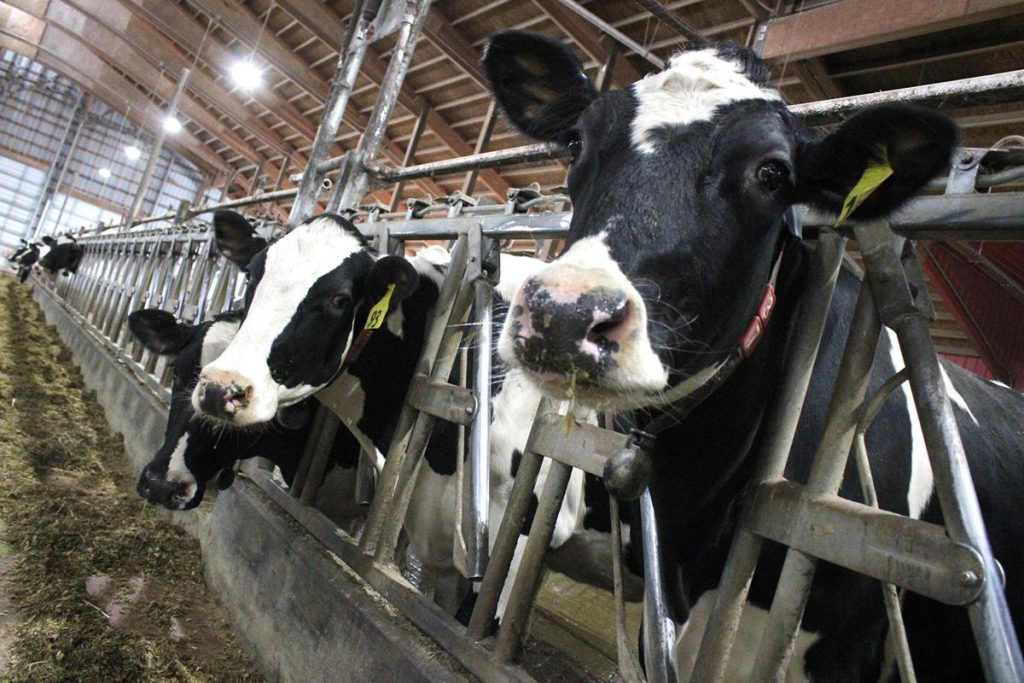
Each glass of milk contains, carbohydrates in the form of lactose, fat, protein, vitamins and minerals and enzymes.
But the industry involved to get that milk to the grocery store and price it are more complicated than the short list of what you’ll find inside it.
Northeastern Indiana dairies produce milk for schools and milk that becomes yogurt and cheese. And although many sectors suffered, and some suffered mightily in 2020 due to the coronavirus, the milk industry has managed to hold its own.
With government food programs assisting school-aged children with meals and providing other stimulus, 2020 was actually a slight improvement for some dairy producers.
“It wasn’t quite as bad as 2019,” Garrett dairy farmer Tim Haynes said.
For two or three years, the industry had really suffered, Haynes said. For a time, dairies were producing more milk than was needed, which drove down prices. And when it was in demand regionally or nationally, it wasn’t needed as much locally.
Haynes said some northeastern Indiana milk had to be shipped as far as Wisconsin to be utilized. Those shipping costs had to be eaten by local producers.
Then came the pandemic.
But in the convoluted world of milk commodities, that actually turned out to be a good thing — over time, at least.
Initially, the dairy industry, much like everything else, suffered.
Wolf Lake Dairy farmer John Metzger said he had heard that 60% of milk products went to restaurants. Processing plants were set up to accommodate that sort of bulk packaging.
When restaurants were shut down, the processing plants had to change the way they packaged the milk-related products for distribution in smaller sizes such as one would find in a grocery store.
“We couldn’t get a lot of the processors to shift over,” Metzger said. “They weren’t even capable of packing for grocery stores.”
At one point, Metzger Dairy Farms had to dump eight or nine loads of milk because there simply wasn’t a processing plant that needed it.
But that changed.
“Everybody along the chain kind of stepped up,” Haynes said.
And even more importantly, the government stepped in with programs to provide summer meals for school-aged children and other related programs that gobbled up milk products.
“That’s been a positive for dairy,” Haynes said.
“The government is stepping in and buying cheese,” Metzger said. “They had to do something to keep people fed. The government makes sure there’s food there.”
The weak dollar has also had an impact. Haynes said he had heard up to 33% of milk products were exported to other countries, increasing demand since the weak dollar allowed foreign countries to afford more American milk on the trade market.
Another factor in the pandemic that turned out be a positive for the milk industry was that people were staying at home and making their own meals instead of eating out as much. Both Haynes and Metzger said people started using more milk because of this.
Kids at home instead of going to school? Milk on cereal. Adults working at home? Maybe slapping cheese on cold cuts instead of dining out.
But there was one stay-at-home food product to rule them all:
Haynes said one restaurant facet that helped the dairy industry has been take-out pizza. Those take-out pizzas, so convenient, are loaded with dairy-produced cheese.
Add it all up, and 2020 was an improvement for many dairy farmers.
“I think it was a better year for a lot of dairies,” Metzger said. “I think dairy has weathered (the pandemic) better than other businesses. Prices have been better than they have been in the past.”
Metzger said it “roils his gut” to have to rely on the government program, but at least his industry and farm is still in business.
Perhaps because of the increased demand, fluid milk prices have been on the rise.
According to the United States Department of Agriculture, the retail price for a gallon of whole milk was $3.28 in 2018, $3.32 in 2019 and then jumped 6% in 2020 to average $3.52.
The retail price of 2% milk, according to the USDA, saw similar increases, moving from $3.25 per gallon in 2019 to $3.47 in 2020, a jump of 6.8%.
That being said, both Haynes and Metzger said increases in retail milk prices rarely find their way down the udder to the producers’ pockets.
“The farmer doesn’t get paid near that,” Metzger said.























